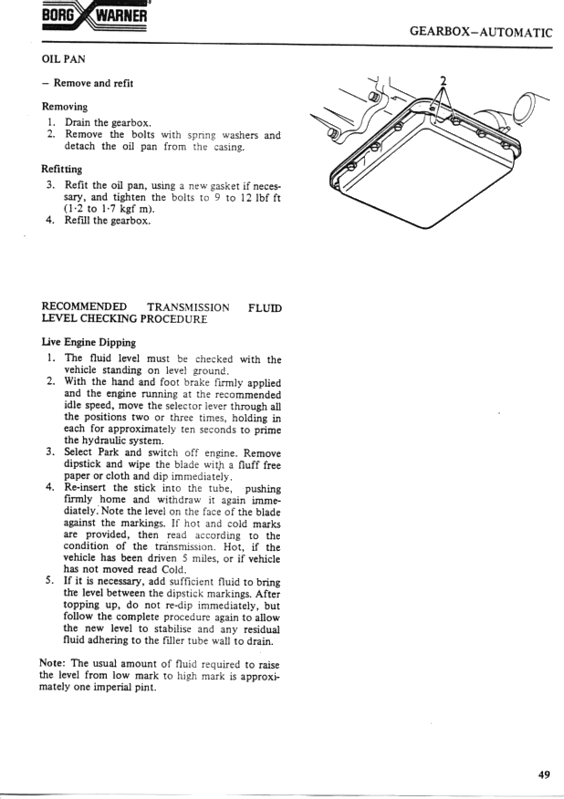The workshop manual for the 3500 lists two methods for checking the transmission fluid level as it applies to the BW35. One with the engine running, the other with it off. In the BW35/65 Checklist Harvey replied to a question on this subject as to whether it would make a difference to which he replied “Yes it does make a difference and the book is wrong”
That seems fair and reasonable for whenever I have mentioned it to a transmission mechanic he too has said that it is carried out with the engine running.
So now I am wondering as to why in the official Borg Warner Service manual for the 35 transmission it says that the engine must be switched off! You would hope seeing that Borg Warner designed the transmission that they would know the correct method for servicing.


So is the method with the engine running a blanket approach unless the transmission manufacturer specifies otherwise? Harvey, have you seen documentation from Borg Warner to the contrary? Where did the engine on method come from?
Ford Australia also included the Borg Warner engine off method in their workshop manuals right up until circa 1992 but with the additional requirement that the level must be checked within 10 seconds of having done so. Cars manufactured after this time were no longer fitted with the BW 3 speed transmission.
Ron.
That seems fair and reasonable for whenever I have mentioned it to a transmission mechanic he too has said that it is carried out with the engine running.
So now I am wondering as to why in the official Borg Warner Service manual for the 35 transmission it says that the engine must be switched off! You would hope seeing that Borg Warner designed the transmission that they would know the correct method for servicing.


So is the method with the engine running a blanket approach unless the transmission manufacturer specifies otherwise? Harvey, have you seen documentation from Borg Warner to the contrary? Where did the engine on method come from?
Ford Australia also included the Borg Warner engine off method in their workshop manuals right up until circa 1992 but with the additional requirement that the level must be checked within 10 seconds of having done so. Cars manufactured after this time were no longer fitted with the BW 3 speed transmission.
Ron.

